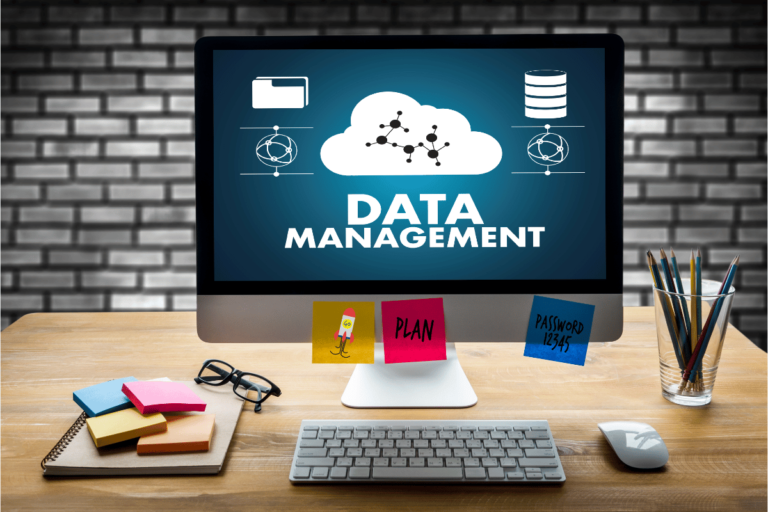Optimizing Your Bottom Line: Mastering Revenue Cycle Analytics
Cracking the Code of Revenue Cycle Analytics
Revenue cycle analytics is like the secret sauce for boosting healthcare finances. It’s all about using data to keep tabs on everything from patient check-ins to getting those bills paid. The big idea? Make things run smoother, cut down on costs, rake in more cash, and keep patients happy (MD Clarity).
Revenue Cycle Automation
Automation is the new black in revenue cycle management. Forbes says a whopping 78% of health systems are jumping on the automation bandwagon (Invensis). Why? Because automating tasks means fewer slip-ups and faster processes.
Here’s what you get with revenue cycle automation:
- Speedier processing: No more waiting around.
- Spot-on billing and coding: Fewer mistakes, more money.
- More time for patients: Less paperwork, more care.
- Better data: Smarter decisions with solid info.
Must-Know Metrics in Revenue Cycle Analytics
To keep your revenue cycle in tip-top shape, you’ve got to know your numbers. These metrics are like the pulse of your financial health. Check out the table below for the lowdown:
| Metric | What It Means |
|---|---|
| Days in Accounts Receivable (AR) | How long it takes to get paid. Shorter is better. |
| Claim Denial Rate | How often claims get denied. Lower rates mean better billing. |
| Net Collection Rate | How much you actually collect vs. what you billed. Higher is better. |
| Charge Capture Rate | How many charges make it to the bill. Higher means better charging practices. |
| Payer Mix | Where your money comes from (insurance, Medicare, self-pay). A good mix keeps things stable. |
By keeping an eye on these metrics, you can spot problem areas, strike better deals, and fine-tune your revenue cycle. For more juicy details, check out our deep dives on healthcare revenue cycle analytics and revenue cycle management analytics.
Mastering revenue cycle analytics means you’re using data to make smart money moves and keep your healthcare biz running like a well-oiled machine.
Why Revenue Cycle Analytics Rocks
Getting a grip on revenue cycle analytics is a game-changer for healthcare organizations looking to boost their finances and nail patient payment collections. This approach offers insights that can streamline operations and improve financial outcomes.
Boosting Financial Health
Revenue cycle analytics is like a financial health check-up for healthcare institutions. By spotting inefficiencies and cutting down on billing mistakes, organizations can ramp up their revenue. Key metrics like claim denials, reimbursement rates, and accounts receivable are analyzed to offer actionable insights.
Check out this table to see how revenue cycle analytics can transform financial performance:
| Metric | Before Analytics | After Analytics |
|---|---|---|
| Claim Denial Rate (%) | 10% | 5% |
| Average Reimbursement Rate (%) | 80% | 90% |
| Accounts Receivable Days | 60 | 45 |
These improvements help healthcare institutions stay financially healthy, allowing them to better allocate resources and invest in patient care. For more details, dive into revenue cycle performance analytics.
Upping Patient Payment Collections
Revenue cycle analytics can seriously boost patient payment collections through targeted data analysis. Healthcare providers can spot trends and patterns in patient billing, leading to smarter collection strategies and a noticeable bump in revenue from patients (Invensis).
By digging into patient financial data and payer performance data, organizations can craft better billing and collection approaches. Here’s a table showing the improvements in patient payment collections:
| Collection Method | Before Analytics | After Analytics |
|---|---|---|
| Direct Billing Rate (%) | 70% | 85% |
| Follow-up Contact Rate (%) | 50% | 75% |
| Payment Plans Established (%) | 30% | 60% |
These enhancements not only boost cash flow but also improve patient satisfaction. Healthcare providers can maintain better relationships with patients by offering flexible payment options and clear communication. For more strategies, check out our articles on healthcare revenue cycle analytics and revenue cycle management analytics.
Making Revenue Cycle Analytics Work for You
Getting a grip on revenue cycle analytics can seriously boost your financial game and streamline operations in healthcare. Let’s break it down into two main parts: crunching the numbers in healthcare and using predictive analytics to stay ahead of the curve.
Crunching the Numbers in Healthcare
Data analysis is like the secret sauce for upping your patient payment collections. By diving into the data, healthcare providers can spot trends and make smarter decisions about billing and reimbursements. According to Invensis, smart data analysis can lead to a noticeable bump in revenue from patients.
Here’s a quick look at the types of data that matter:
| Data Type | What’s It About? |
|---|---|
| Patient Financial Data | Info on patient billing and payment history. |
| Claim Denial Data | Stats on denied claims and why they got denied. |
| Payer Performance Data | How well different payers are doing with payments and collections. |
| Coding and Billing Data | Details on coding accuracy and billing practices. |
| Operational Data | Metrics on how efficient your revenue cycle processes are. |
By digging into this data, healthcare organizations can spot patterns and figure out where they need to improve. Making targeted changes based on these insights can boost financial health and make patients happier. For more tips, check out our article on healthcare revenue cycle analytics.
Predictive Analytics: Your Crystal Ball for Revenue Cycle Management
Predictive analytics is like having a crystal ball for your revenue cycle. It uses fancy algorithms and machine learning to predict future events. This helps healthcare providers anticipate payment delays and spot patients who might struggle to pay their bills. MD Clarity says that using predictive analytics can make the revenue cycle process a whole lot smoother.
By looking at historical data, healthcare organizations can make educated guesses about the future. For example, if you know why claims were denied last year, you can fix those issues and reduce denials going forward, which keeps the revenue flowing.
Here are some perks of using predictive analytics:
| Benefit | What’s in It for You? |
|---|---|
| Anticipating Payment Delays | Spotting potential payment delays to manage cash flow better. |
| Targeting Patient Assistance | Identifying patients who might need financial help and reaching out to them early. |
| Optimizing Collections Strategies | Crafting strategies to improve collections based on how patients behave. |
Bringing predictive analytics into your revenue cycle management can boost your financial performance and make operations run smoother. For more on this, check out our article on revenue cycle management analytics.
So, there you have it. By getting smart with your data and looking ahead with predictive analytics, you can keep your revenue cycle in top shape and make life easier for everyone involved.
Tackling Revenue Cycle Management Headaches
Revenue cycle management (RCM) can be a real pain, throwing a wrench in both financial performance and day-to-day operations. Two big culprits? Coding errors and claim denials, plus the constant need to fine-tune revenue cycle processes.
Coding Errors and Claim Denials
Coding errors are like gremlins in the RCM machine, causing claim denials left and right. These slip-ups include things like upcoding, unbundling codes, using the wrong modifiers, and slapping on unlisted codes without proper documentation. Such mistakes can drain both time and money. If you’re still using outdated methods, expect a mountain of claim rejections, which means more costs and headaches (CollaborateMD).
Keeping an eye on the Claim Denial Rate is crucial. This KPI shows how many claims get denied by insurance companies or patients, pointing out issues like coding errors or missing info (Databox).
Using solid RCM platforms that automate tasks and catch errors can slash denials and boost efficiency. Check out this table for a quick look at common coding errors and their impacts:
| Coding Error Type | Description | Potential Impact |
|---|---|---|
| Upcoding | Billing for a pricier service than provided | More claim denials and penalties |
| Unbundling Codes | Separating services that should be billed together | Lost revenue from bundled services |
| Inappropriate Modifiers | Using the wrong modifiers on claims | Claims denied due to bad coding |
| Unlisted Codes | Using codes without proper documentation | More scrutiny and claim denials |
Fine-Tuning Revenue Cycle Processes
Optimizing revenue cycle processes means managing every billable event from start to finish to boost revenue. This involves tracking patient billing from the moment they schedule an appointment to the final payment. Integrating info from various clinical and administrative systems is key for generating and submitting claims to third-party payers (NCBI).
You can streamline revenue cycle processes by using revenue cycle analytics software that cuts down on errors and keeps tabs on financial performance. By focusing on system integration, healthcare providers can improve their revenue and financial stability.
To make things even smoother, healthcare organizations should consider:
- Automating Billing Processes: Cutting down on manual errors and boosting efficiency by streamlining billing tasks.
- Regular Staff Training: Keeping coding and billing staff up-to-date on the latest coding rules and tech.
- Monitoring Performance Metrics: Regularly tracking metrics like claim denial rates and billing accuracy to spot areas for improvement.
By tackling coding errors and fine-tuning revenue cycle processes, healthcare providers can seriously boost their financial performance and cut down on RCM headaches. For more tips, check out our articles on healthcare revenue cycle analytics and revenue cycle performance analytics.






